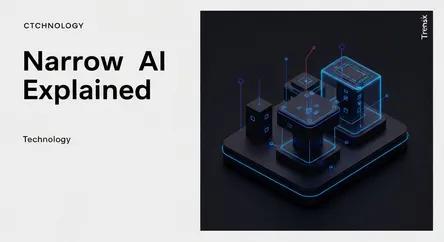Technology
Narrow AI Explained

Discover Narrow AI, the technology powering smart assistants and recommendation engines. Learn how this specialized AI works and why it's so common.
What is it?
Narrow AI, also known as Weak AI, refers to artificial intelligence systems designed and trained to perform a specific, well-defined task. Unlike the concept of a general, human-like intelligence (AGI), Narrow AI operates within a limited, pre-determined range. It doesn't possess consciousness or self-awareness. Everyday examples are all around us, from virtual assistants like Siri and Alexa that answer our queries, to the facial recognition software that unlocks our phones, and the recommendation algorithms on Netflix or Spotify that suggest what we might enjoy next.
Why is it trending?
Narrow AI is trending because it is the most successful and practical form of AI currently in existence. All the AI breakthroughs and applications we see today fall under this category. Its popularity is driven by tangible results across industries, from automating business processes and improving medical diagnostics to personalizing customer experiences. The convergence of massive datasets, powerful computing hardware, and advanced machine learning algorithms has made it possible to build highly effective Narrow AI solutions that solve real-world problems, creating immense economic and technological momentum.
How does it affect people?
Narrow AI is deeply integrated into daily life, often invisibly. It powers the spam filters in our email, the navigation apps that guide our commutes, and the fraud detection systems that protect our finances. While it brings incredible convenience and efficiency, it also presents challenges. The automation driven by Narrow AI raises concerns about job displacement in certain sectors. Furthermore, since these systems learn from data, they can inherit and amplify existing societal biases, leading to ethical questions about fairness, transparency, and privacy in automated decision-making.